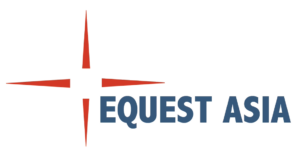Achieve Your Goals: Write Yourself A “Hope Letter”
We’re now in the month of February, 2016. By this time achieving any of those New Year’s resolutions we all fastidiously made at the end of 2015 may be slowly fading from our consciousness and starting to settle in the dust bin of “here today and gone tomorrow” goals. According to a study conducted by the University of Scranton’s 2014 Journal of Clinical Psychology, about forty five percent (45%) of residents in the United States typically make New Year’s resolutions. But among these Americans, there is only an eight percent (8%) chance of anyone realizing their goals. The main reason for this was never cited, although most experts contend it has to do with the degree or intensity of a person’s resoluteness and persistence to pursue whatever it is they set their minds to achieve for themselves and for their loved ones. Is There A Better Way To Improve This Situation? And so, you just might be telling yourself … “Heck! There’s got to be a better way to make good, significant changes in my live!” And there is. The “Hope Letter” The Hope Letter is a simple uncomplicated exercise. It is powerful though. This stems from what C.R. Snyder, Ph.D. professor of Psychology at the University of Kansas developed and called the Hope theory. This says that by concentrating on three important elements, the achievement of goals happens. He identified these factors to be: Having a clear goal Having ways and means of achieving this goal Believing in your ability to reach this goal. Researchers have further revealed that persons who have high hopes are more likely to cope better with physical pain or life’s many frustrations. They also tend to be happier and more satisfied. Building on the work of mental health professionals, who, from as early as the 1950’s begun realizing the key role hope played in the achievement of dreams, some creative, smart executive coaches developed the Hope Letter. When we write down our hopes and dreams…when we write down the ways and means we shall achieve them, we, in fact, become more successful in making them come true. This hope letter has been used among these executive coaches’ clients and have been known to work. Here then are the easy-to-follow, step by step guide on making one: Put it down on paper. Write a letter addressed to yourself. Date it precisely one year into the future. Don’t put a limit on yourself. Take the time to imagine what the scenario will be if you achieved or accomplished all your goals. Take into consideration your job and career, your health and finances, your love-life, family and friends, fun and personal growth. Prompt yourself with “What do I hope to have accomplished this time in 2017?” You’ll need to be accountable for this. When you’re done with the letter, give it to a close friend, your wife or special girl, your coach or colleague and ask him/her to mail it back to you, one year from the date you wrote it. You can also send a digital letter on www.futureme.org, program it so you will receive it in one year! Do this. When you get your letter back, you’ll be amazed at the number of things you shall have achieved, the reason being … when you set and write down your intentions, …your ways and methods of achieving them … your actions will naturally follow. Are all your goals … things you want to happen … do they happen, are they achieved? Not usually, but many do get realized. So, celebrate what you do achieve and learn from what you don’t and then write yourself another hope letter for the year ahead.
Achieve Your Goals: Write Yourself A “Hope Letter” Read More »




